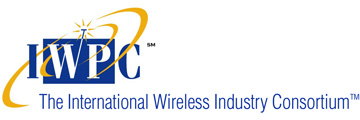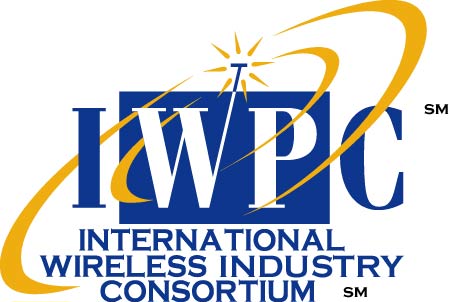Automotive Radar Sensors for Semi-Automatic and Autonomous Driving and Parking Systems
Hosted by:

SOLD OUT
When
February 21-23, 2017
Introduction
Semi-automatic and autonomous driving is a major goal of all automotive OEMs worldwide and first vehicles are already available which allow automated or even autonomous maneuvering in confined scenarios. On the way to (semi-)automatic or autonomous driving functions all available technologies (radar, vision, lidar, ultrasonic sensors) are within the focus of the industry to provide the necessary data basis. Particularly radar is considered to be an indispensable building block in the environment perception architecture of modern cars.
This workshop will provide an update on novel developments regarding automotive radar technology, performance, measurement, simulation, packaging, and fusion with other sensors to enable semi-automatic or/and autonomous parking and driving systems.
Workshop Goals
- Provide information on status and trends regarding autonomous parking and driving applications.
- Review the present state and novel developments in radar technology.
- Present additional information on supporting technologies and activities (e.g. semiconductor and antenna technology, signal processing, fusion, functional safety, frequency allocation, etc.).
- Create an open forum for the global automotive radar community to discuss requirements, technological opportunities, challenges, limitations, and trade-offs for/of radar technology.
Agenda
|
DAY 1 Tuesday 13:30 |
Demonstration
|
Registration at hotel SOLD OUT |
||||||||
| 18:00 |
Evening reception |
Registration at hotel |
||||||||
|
DAY 2 Wednesday 07:00 |
Coffee and Registration |
Hotel
|
||||||||
|
08:00 |
Welcome and Introductions
|
|
||||||||
|
09:00 |
Host Keynote
|
The Future of Sensor Technology for Autonomous Parking and Driving
Development Driver Assistance Systems
|
||||||||
|
10:00 |
Networking Break |
|
||||||||
10:40 |
OEM Perspectives
|
Carbon Material and Automotive Radar - Will They Become Friends ?
Component Owner Radar Systems
Volkswagen Park Assist: From Ultrasonic to Radar Technology
Project Manager
|
||||||||
|
12:00 |
Networking Lunch |
|
||||||||
|
13:00 |
OEM Perspectives (continued)
|
Cost Engineering Topics in Radar Sensor Design and Inside Car Communication
Product Cost Engineer
|
||||||||
|
13:40 |
Tier 1 Perspectives
|
Sensor Development for Autonomous Driving
Head of Design & Development Radar Technology
Pedestrian Detection With Radar Only
Signal Processing Engineer
|
||||||||
|
15:00 |
Networking Break |
|
||||||||
|
15:20 |
Tier 1 Perspectives, continued
|
Radar Based Satellite Architecture for Autonomous Driving Applications
Global Product Manager, Radar
Parking with SAR Radar
Radar Engineer
Automotive Synthetic Aperture Radar CEO
|
||||||||
|
16:50 |
Spectrum and Policy
|
Activities in CEPT (European Spectrum Regulation) for Applications in Transport and Traffic Telematics including Sensors
Spectrum Management
|
||||||||
17:20 |
End of Day Panel
|
|
||||||||
|
18:10 |
Adjourn for Day |
|
||||||||
|
19:30 |
Networking Dinner - Altes Brauhaus zu Fallersleben |
Bus transportation provided and will depart from hotel at 19:00 |
||||||||
|
DAY 3 Thursday 07:00
|
Coffee and Registration |
|||||||||
|
08:00 |
Chinese Market Perspectives
|
Automotive Radar in China
Chief Engineer
|
||||||||
|
08:30 |
Tier 1 Perspectives, continued
|
Additive-Functions of an Automotive Forward Facing Radar
Manager
High Efficiency and Small Antenna Technology for A Long Range Radar Using 77 GHz Band
Senior Researcher
79 GHz Radars in a Sensor Network for Highly Automated Parking
Radar System Architect
|
||||||||
|
10:00 |
Networking Break |
|
||||||||
|
10:30 |
Tier 1 Perspectives, continued
|
Object Classification using Kernel Learning with a 79GHz 3D radar
VP Radar
Smartmicro Radar Technology for Automated Driving
Managing Director
Self-Learning Methods for Automotive Radar Sensors
Manager, Radar Perception
|
||||||||
|
12:00 |
Networking Lunch |
|
||||||||
|
13:00 |
Technology Enablers
|
Detecting and Tracking Slow Moving and Stationary Targets
Antenna and Microwave Specialist
Game-Changing Solutions to Next-Generation Automotive RADAR
General Manager, ADAS & Automotive Safety
Role of Radar in ADAS Systems
VP, ADAS Products
What to Consider when Choosing High Frequency Circuit Materials for Millimeter-wave Applications
Technical Marketing Manager
|
||||||||
|
15:00 |
Networking Break |
|
||||||||
|
15:30 |
Measurement and Validation Panel
|
Automotive Radar Simulation
Director of Global Automotive Industry
Automotive Radar Interference and Integration Testing
Technology Manager
Impact of Modulation Parameters on Object Resolution
Strategic Product Planner
Radar and ADAS Functional Verification with Measurements, Simulation and Hardware In the Loop (HIL)
General Manager
|
||||||||
17:30 |
Closing Discussion |
|
||||||||
|
Dutch Dinner |
|
FAQs
- What is the deadline for presentation/handout materials?
- What can I do to prepare for speaking an at IWPC workshop?
- Who are the attendees?
- What are the costs/registrations fees?
- Hotel information?
- What are the travel options from the airport to the hotel?
- Are there any audiovisual requirements?
- Will business cards be collected?
- What is the dress code?
- How will handout materials be provided?
- What is the deadline for
presentation/handout materials?
Deadline for electronic version of presentation/handout materials: Friday, February 10, 2017
- What can I do to prepare for speaking an at IWPC workshop?
Click on the link below for a short video guide regarding preparing for and improving your IWPC presentation:
- Who are the attendees?
- We do not permit the Press.
- We do not permit Analysts.
- We do not permit Consultants.
- We do not permit 3rd party sales reps.
- We only permit "first hand knowledge experts" in business and technology issues, prepared to contribute to the discussion.
- What are the costs/registrations fees?
ALL Hosts, Speakers, Panel Members and Attendees will be asked to cover out-of-pocket workshop costs such as conference room costs, food (Social Reception plus First Day breakfast/lunch/dinner plus Second Day breakfast/lunch plus Breaks), audio/visual costs, etc.
These costs will be $1440 (USD) per person. (For IWPC Members only.)
ALL Hosts, Speakers, Panel Members and Attendees will be asked to pay this fee in advance with either Visa, MasterCard, American Express, cash, personal check or business check. Make checks payable to IWPC.
- Hotel information?
INNSIDE Wolfsburg
Heinrich-Nordhoff-Straße 2
38440 Wolfsburg, Germany
Phone: 49-536160900
Hotel WebsiteThe IWPC room block rate is 169 Euros.
The cut-off date for reservations is Wednesday, January 18, 2017. After that date, rooms cannot be guaranteed at the IWPC rate. You can make your reservations on-line at: http://meetings.melia.com/en/IWPCConference.html
- What are the travel options from the airport to the hotel?
Directions and transportation options will be posted as soon as possible.
- Are there any audiovisual requirements?
A Computer Projector will be available for the speakers.
In addition, we audiotape all presentations and the interactive discussions. Post workshop, presentations are made available to IWPC Members on the IWPC WEB site, along with “recordings” of all presentations and panel sessions.
- Will business cards be collected?
Business cards will be collected at the door from all attendees. We will make copies of these cards, which will be available to all who provided a business card.
- What is the dress code?
Business casual suggested. No ties, please!
- How will handout materials be provided?
For ALL IWPC members:
All IWPC members are invited to submit materials to be included in the online workshop folder in the IWPC Research Library. This should NOT BE SALES MATERIALS. Rather, we suggest it contain technical information about your technology as it relates to the workshop topics.
For all companies who will be making a presentation at the Workshop:
You are invited to submit an advance copy of your presentation, complete with graphics and illustrations.
These materials will be included on the IWPC website Research Library.
Please submit these materials either by email, as a Word for Windows file, Power Point files or PDF files.
- Go to www.iwpc.org
- Click on IWPC Activities Tab
- Under Workshop: Automotive Radar Sensors for Semi-Automatic and Autonomous Driving and Parking Systems
- Click on Submit Presentation Proposal. Complete the form and attach your presentation.
- Once we receive your presentation we will send an email confirmation.
AS BACKUP, PLEASE BRING AN ELECTRONIC COPY USB STICK WITH YOU!











